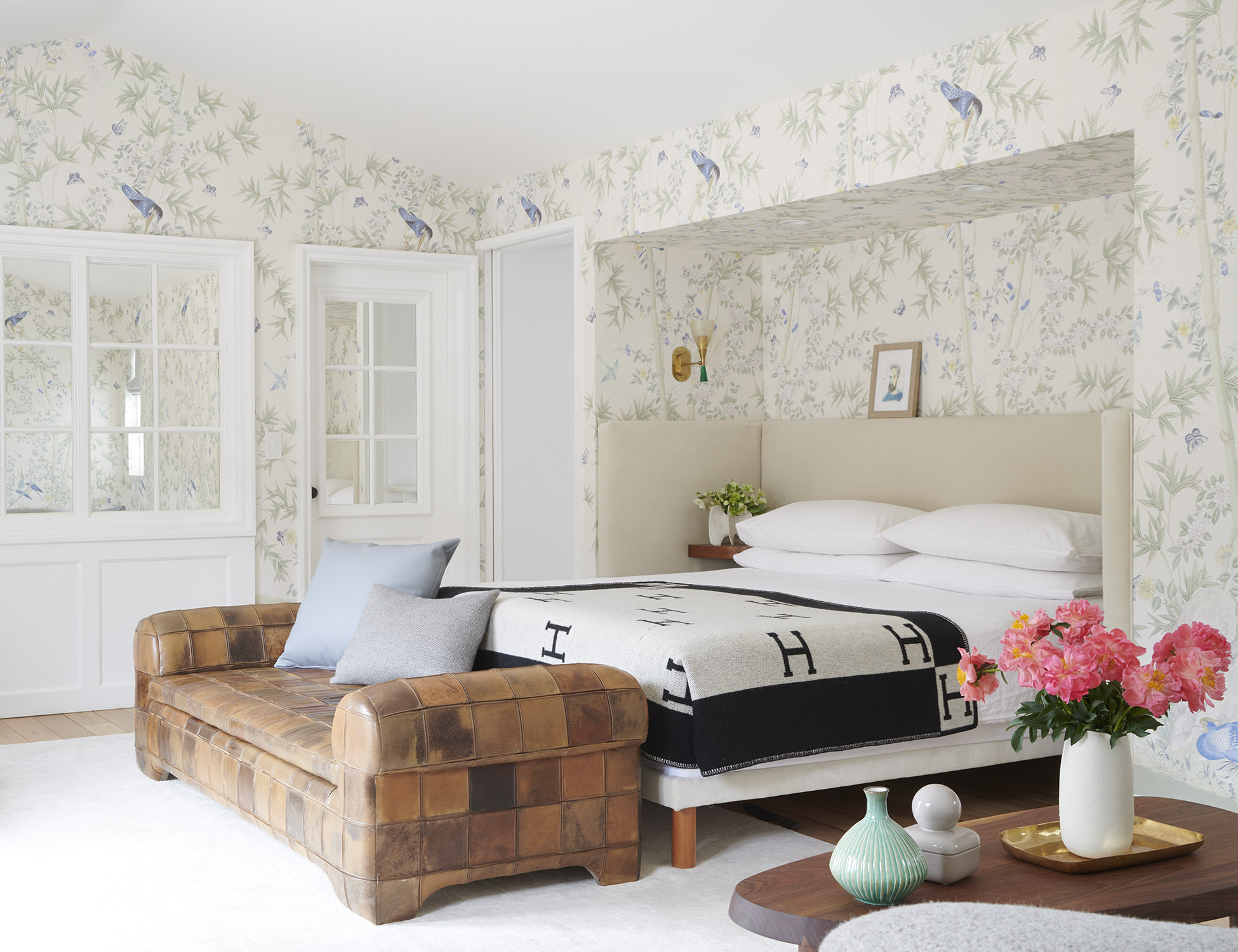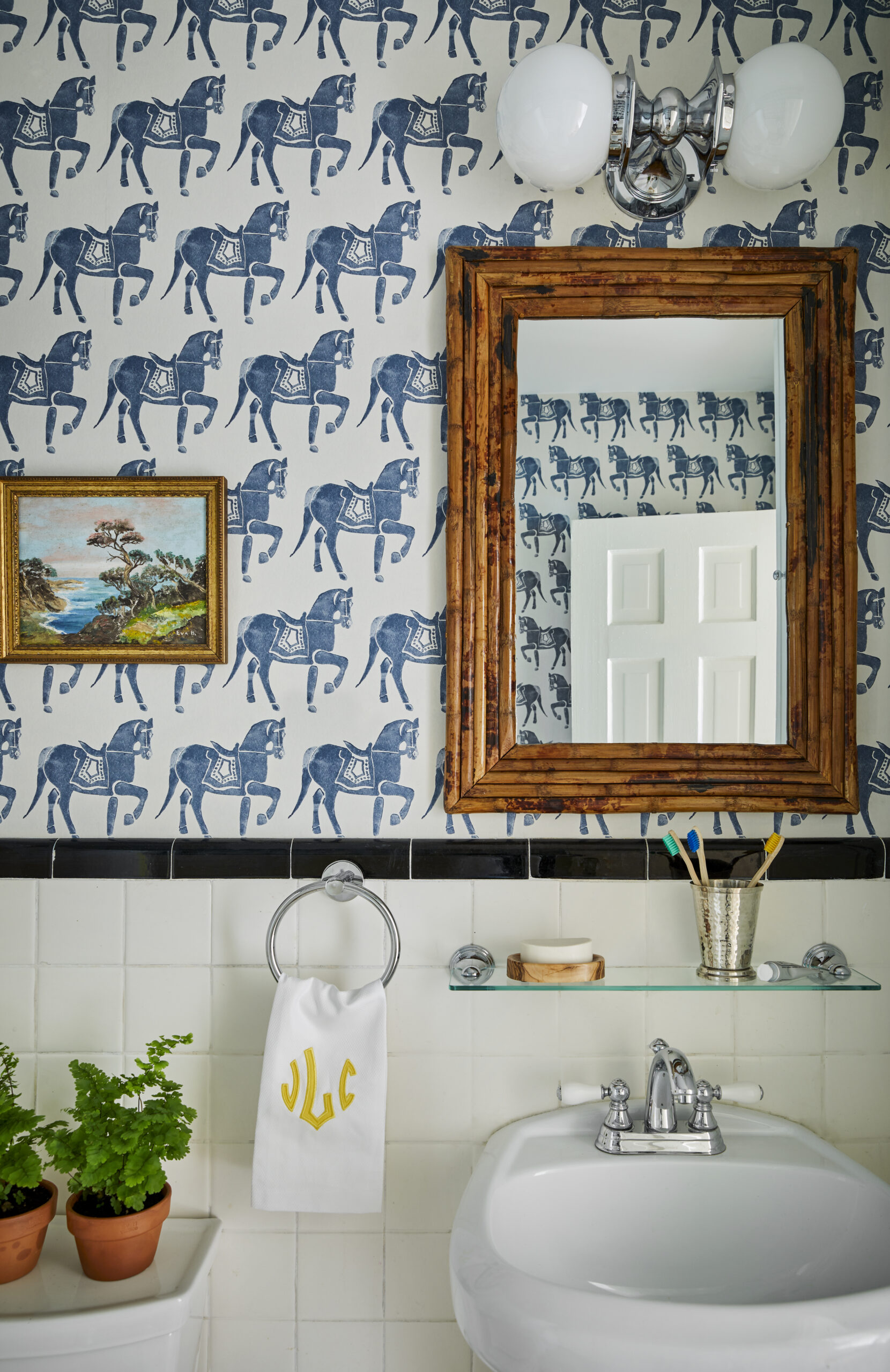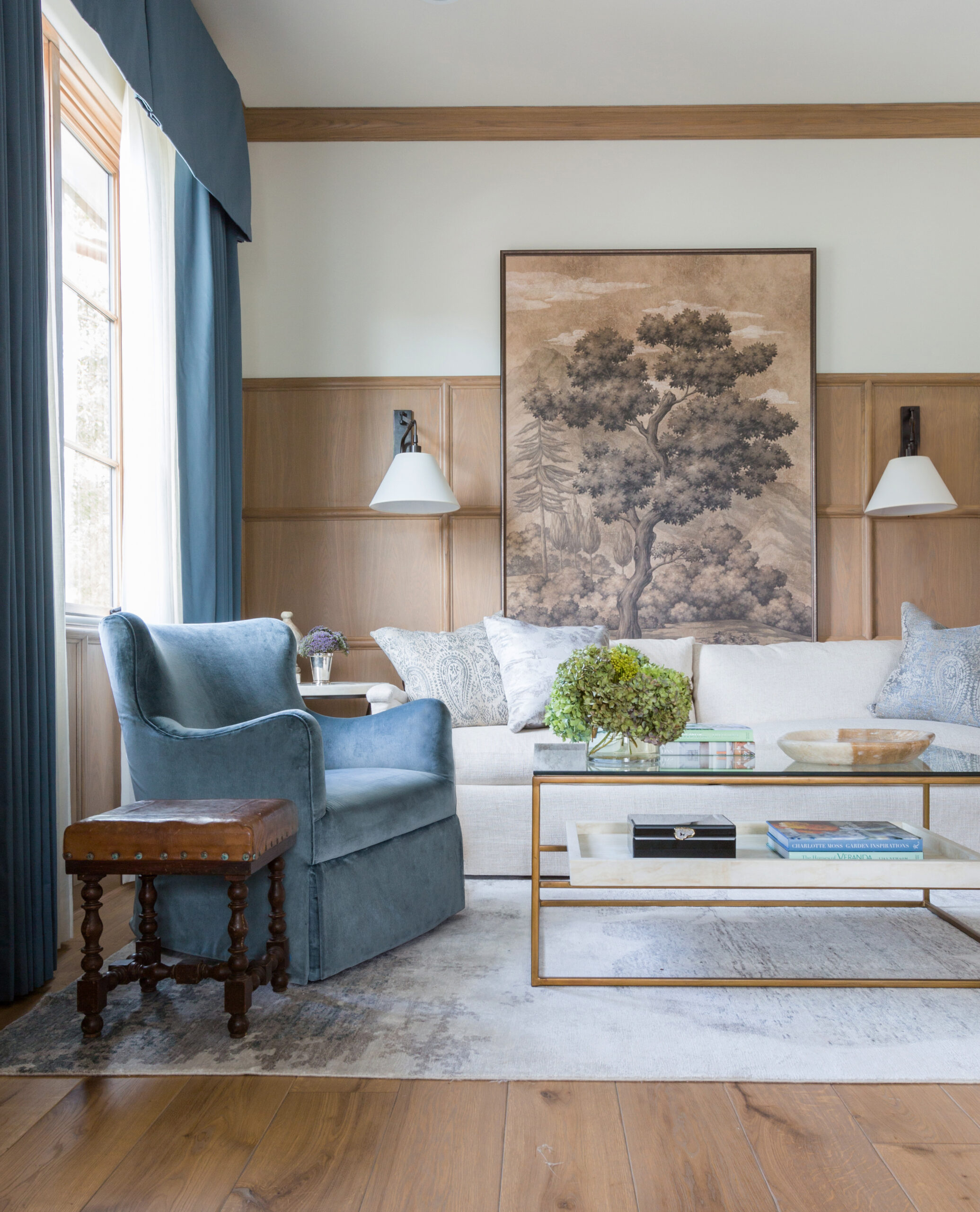“Creating a space that’s livable and beautiful is important, but if a project doesn’t have a structure it will go on for months and months and cause all kinds of hiccups in other jobs.” These wise words come from Brigette Romanek of Romanek Design Studio in L.A. Come along for the ride as she and Katie Rosenfeld of Katie Rosenfeld & Co. in Boston and Jeffry Weisman of San Francisco-based Fisher Weisman Brugioni dole out their best tips on effective project management. They joined Benni Frowein, CEO of Schumacher Europe and Middle East, to share what they’ve learned from navigating the scary turns in their own projects. Here’s what it takes to successfully drive a project down a smooth road to install day.

Brigette Romanek‘s Los Angeles-based firm works with a roster of A-list clients, including Beyoncé and Gwyneth Paltrow. She partnered with Schumacher on the design of her own Los Angeles bedroom, featuring Brighton Pavilion Panels in Green on the walls and a wraparound headboard in Alistair Indoor/Outdoor Velvet in Bone.
Max Kim-BeeFirst Things First: Discuss the Budget Right Up Front
Let’s assume you’ve met the client and decided you’re a good match: You like them, you like the space, the location and scope are right, and the project is on brand for your firm. In short, you’re ready to take on the project. The next crucial step: talk money.
“You have to talk about it at the very, very beginning because it informs the entire design,” says Romanek. “Put your fees out there and find out their budget for furnishings from the outset, even during that first phone call. Don’t be shy about it, because if it hasn’t been discussed, you’ll pay for it later. You don’t want the client to walk you through their home and tell you everything they want and then say they have, like, five dollars to spend. You’ve just wasted your time.”
Katie Rosenfeld agrees. “We like to spell out all those hidden costs up front and get the money stuff over with and then just have fun.” Before signing on a new client, she sends out a group of documents including a very detailed flow chart that illustrates every single charge—right down to the installation of drapes—which helps cut down on the number of times clients say “you never told me there’d be a charge for that.”
Second: Figure Out What They Want
“It’s really important to listen to clients, that’s the way to make sure they end up happier with the final product than they ever could’ve imagined,” says Jeffrey Weisman. He employs what he calls his Rorschach test first: He sits down with 200 fabrics and asks the client to tell him what they like to touch, what colors make them happy, what fabrics turn them off. After creating a shared visual vocabulary, he moves on to understanding their dreams for the project. “I spend a lot of time parsing out what I’ve heard and how to make the rooms function incredibly well, whether it’s Christmas or the kids’ birthday party or the husbands having dinner by themselves. I really think about how the house is going to work.”
Rosenfeld meanwhile takes a lot of cues from what her clients wear and how they present themselves. “When people are thinking about hiring me, I also send them a really detailed kind of psychological questionnaire. I ask them where they like to travel, their favorite places to shop, do they make the bed every day, do they leave dishes in the sink. I want to know their lifestyle habits and all of that because it’s going to help me recruit all kinds of data that informs my decisions about what to show them.”
Once You Understand Their Vision, It’s Time for Client Presentations
“I don’t like going into presentations with a thousand things,” says Weisman. “I want to go in saying, ‘This is the sofa, this is the chair.’ You’re being hired as a professional because the client wants your opinion, and when you have too many options it makes it appear that you’re not clear about the direction. And then the conversation just spins and spins for no reason. It’s better to be direct, with a clear idea of what you want. If it’s not perfect rework it and come back.”
Weisman starts designing rooms based on scale floor plans and fabrics, and then selects the rest of the pieces from there–with one exception. “If we’re using an antique carpet, then it absolutely has to come first. If the client falls in love with fuchsia and puce for the fabrics, looking for a very expensive antique rug in a specific size with those colors makes your life hell.”
Another designer who starts with fabrics and colors, not rugs: Rosenfeld. “I’m very big on sight lines and making each room feel like it’s related to the next, so I start bundling things together and mentally walk through the house with these textiles and wallpapers and I sort of make a little path on the floor of my office. That’s how I start.”
Romanek isn’t big on taking her clients shopping—“Shopping days are fun, but for me personally they’re not very productive!”—and instead opts for a two-step process using presentation boards or renderings. “We show the boards and the fabrics, and then we adjust and curate and have another meeting,” she says. Most clients opt for renderings, for which her firm charges a separate flat fee and executes using V-Ray or SketchUp. “It’s really helpful for clients, especially those who are not that visual, and it makes the process quicker and easier.” As for the overall design, she sees the entire house as a movie with a beautiful through-line, with each room representing a different look and a different scene.
Place Those Orders!
After refining your boards and making final selections, it’s time to issue all of your purchase orders. Just make sure you heed Romanek’s advice, and document the client’s approval for every item. “There will come a time when the client will say they don’t remember picking that chair, so try to get everything on e-mail or ask the client to sign an approval before purchasing.” Romanek uses work orders for all custom pieces, which document every single detail, from the shape of the arms to the finish on the legs. “The client has to sign off on it, so there are no surprises.”
Next, Create a Schedule Leading to Install Day
Romanek keeps her design train running on time with detailed schedules for each part of the project: There’s a lighting schedule, a furniture schedule, a fabric schedule. She uses project management tools BuilderTrend or Smartsheet to track each and every item, including the date it’s selected, ordered, fabricated, received and ready for installation. “The client has access to see everything, so instead of calling me, they can log in at 2 AM when they’re trying to remember what chair they picked,” says Romanek. The initial setup for each project is a bit time consuming, “but once you have a project in the system, it’s one of the best things you can do with your time.”
Another thing that keeps everything on track? Calendars that adjust when a client misses a design approval deadline. “We literally say we’re going to present boards to you on x date, and you have five days to respond. If you don’t, every deadline after that gets pushed back automatically. You have to manage client expectations and make it clear that yes, you know they want it all yesterday, but if they miss a deadline by a week, it will delay the entire project.”
For Weisman, figuring out the final install date begins with the item with the longest lead time. “We design a lot of the furniture that goes into our projects, and that takes more time, so I work backwards from there,” he says. “You structure your wallpaper hanger and your drapery installer and your carpet installer around that, but you’ve got to pad it a little bit and give yourself the time to get it right.”
Do Install Day Right
“In our contract, we stipulate that clients can’t be present during installation, and we don’t do partial installations,” says Weisman. “Ever.” Why? Seeing bits and pieces of a project often leads to second-guessing. The wallpaper might seem like too much without the furniture in the room, for example. “I often share images of custom pieces as they’re being completed because it gets the client excited, but installing piecemeal is a big mistake.”
And just in case you’re second-guessing this bit of project management advice, we also asked Romanek and Rosenfeld about the wisdom of installing everything all at once. “Totally agree,” says Rosenfeld. “Yeah. Totally,” says Romanek.
Want to listen to our full conversation? Watch the full video with Brigette Romanek, Katie Rosenfeld, Jeffry Weisman and Benni Frowein below and be sure to follow Schumacher on YouTube for more interviews with interior design tastemakers and webinars on the business of design.



